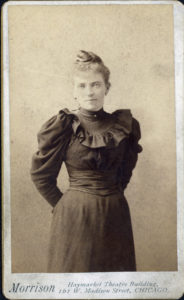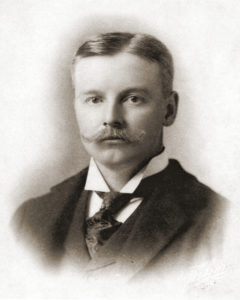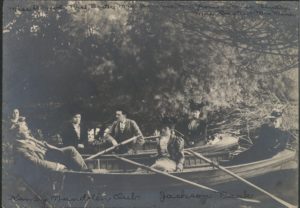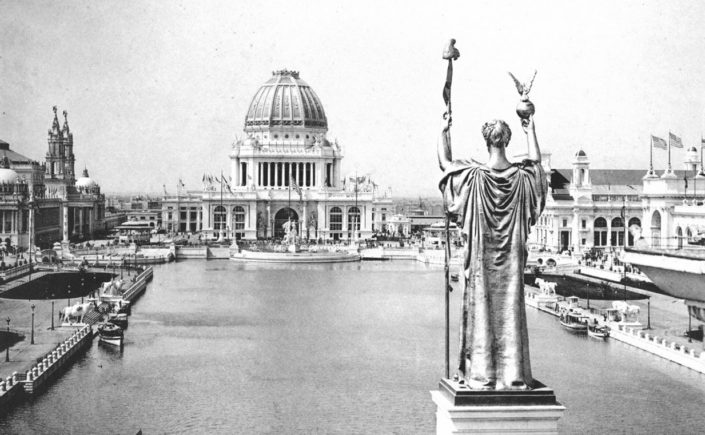
Alice Trainer, ca. 1890
In 1887, the Trainer siblings reunited in Chicago. Coming from Goderich–a pleasant but rather sleepy town–Chicago must have been enormously exciting. It was the second largest city in the United States and was well on its way to a triumphant comeback after the Great Fire of 1871. It was the headquarters of major companies in meatpacking (Armour and Swift), manufacturing (McCormick), retail (Sears and Montgomery Ward), and many other industries. Its seven railroad stations served as the hub for the nation’s railway system. And it was the home of an innovative style of architecture, a burgeoning Arts and Crafts movement, and progressive social reform.

William H. Miner, ca. 1888
No surprise, then, that Chicago should also be home to William H. Miner, a young man looking to make his way in the world. Like Alice, William was orphaned as a child, and at the age of ten moved to Chazy, New York, to live with his Uncle John and Aunt Huldah Miner. Here William absorbed the values of hard work, thrift, and honesty that he would always associate with country life. At eighteen, he headed for Lafayette, Indiana, home of his sister, Jottie, and her husband, John Mitchell, an employee of the Wabash Railroad. Will, too, went to work for the Wabash, learning through apprenticeship about the design and construction of railroad cars and their components. Within ten years, he had received his first patent for a piece of railroad gear, the Miner Tandem Draft Rigging, and was working for the Hutchins Refrigerator Car Company in Chicago.

Alice (far right) and the members of the Kamby Mandolin Club in Jackson Park
We don’t know exactly how or when Alice and Will met, but the earliest correspondence we have dates from 1893. This would be an important year for the city of Chicago, too, as it hosted the World’s Columbian Exposition. Ostensibly held to commemorate the 400th anniversary of Columbus’s arrival in the New World, the World’s Fair was an extravagant celebration of American technological and cultural progress. There were also many examples of colonial architecture and material culture on display; for many midwestern visitors, this was their first real exposure to early American architecture and artifacts. Alice and William paid many visits to the fair, combining their excursions with two other popular turn-of-the-century activities, bicycling and photography.
Alice and William were married in June 1895. After a honeymoon in California, they returned to Chicago to live with Matilda, Bertha, and Louisa. Will’s job required frequent travel, but Alice kept busy with her sisters and friends. She enjoyed the theater and was learning to play the guitar. Scrapbooks that she compiled during this period show that Alice was an avid reader of a wide range of magazines and was particularly interested in fine art, history, and music.
Photo at top: The Grand Basin at the World’s Columbian Exposition, overlooked by the statue Republic
